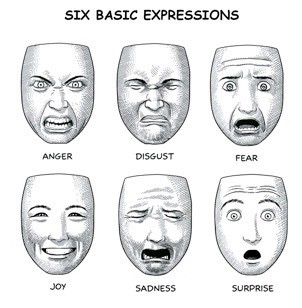Weekly Blog
Weekly Blog 8 | Emotions
This week we are asked to reflect on emotional expression and perception through a cultural lens. Expression and emotion are ultimately forms of communication as social creatures, they’re important agents in order be understood and to understand another human being beyond language and words.

There are six basic emotions we share with primates, and universal emotions and facial expressions shared with cultures all around the world.
Earlier this year I did a few months of tutoring to learn Japanese through an app called Italki. The tutor was a Japanese native and was very helpful in learning the basic structure of Japanese (I still have a lot to learn). One thing I noticed that caught me off guard was how openly expressive she was at expressing confusion. Not so much verbally, but with her facial expression. It was subtle furrow of the eyebrows and slight tilt of the head, not an exaggerated, scrunched up face akin to that of disgust or disdain that I’m used to here in the U.S., but it communicated when I had said something incorrect. This is one interaction, so I cannot say this for the entire culture, but I definitely found it interesting and had to remember to not take it personally, and found it to be quite helpful in a one-on-one learning environment. She was also vocal with showing that she was paying attention with nodding or saying “oh,” “mm,” or saying “I see” in Japanese by saying souka or sou.
Asking myself if these behaviors are similar or different from my expectations prompts another question: where do my expectations of a person from another culture come from? Stereotypes? Media exposure/representation? Mainstream or popular entertainment from the culture? For me, the expectations came from mainstream Japanese entertainment, such as Japanese dramas and reality shows and news. I knew better than to expect Japanese people to act like anime characters, that’s ridiculous. The behavior my tutor exhibited of being vocal in showing that she was attentive was one that I had already known from watching NHK, a Japanese news broadcast, in where when they would interview people the interviewer was similarly vocal and expressive.
I would say cultural display rules explain these experiences, as Japan being a more collective culture, they are more wired to make sure others feel supported or heard by showing that they are paying attention, or can be easily understood, through expressive facial expressions but still try not to appear “rude.”